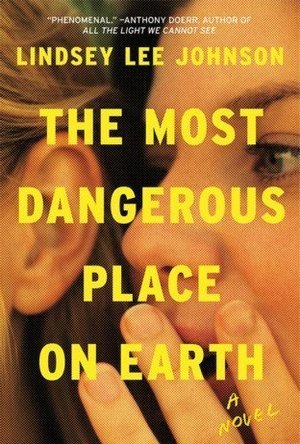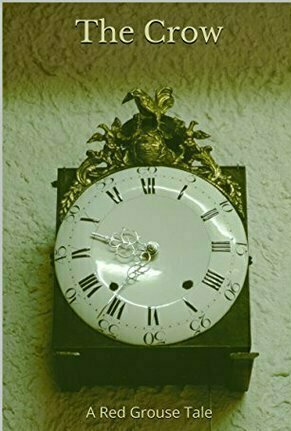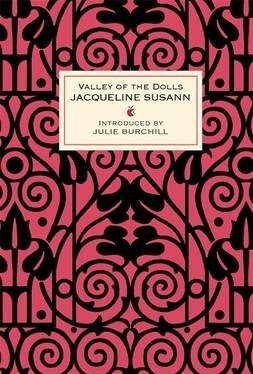Search
Search results
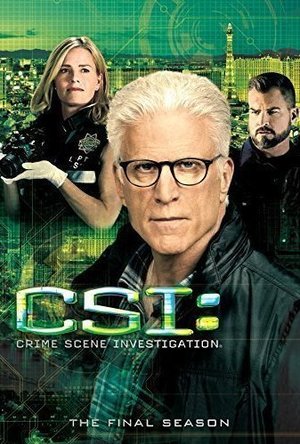
CSI: Crime Scene Investigation - Season 15
TV Season
Finlay finds her car rigged to explode ("The CSI Effect") as Sara and Greg are quarantined ("Bad...
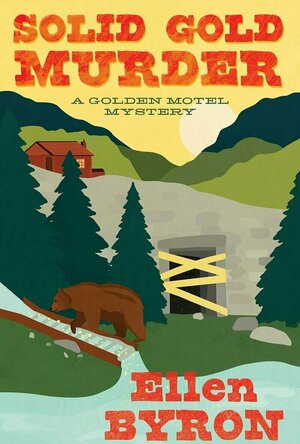
Solid Gold Murder
Book
Dee Stern’s Golden Motel-of-the-Mountains promises a tranquil getaway for outdoor lovers in the...
Kristy H (1252 KP) rated The Most Dangerous Place on Earth in Books
Feb 13, 2018
Mill Valley is the perfect little town, and Molly Nicoll is excited to start a teaching career in English at the local high school. However, when she starts up mid-year, she has no idea about a tragedy that occurred in her students' eighth grade year. To Miss Nicoll, these kids are in deep need of understanding and guidance, even if they are sometimes a bit rude and unfocused. There's Abby, the perfect student prepping for her Ivy League future, but also hiding a secret; Nick, an intelligent kid with a trick for every situation; Cally, a prominent player in the early tragedy, who now floats through school with the other hippie kids; Emma, a talented dancer who loves to let go and party on the weekends; Damon, who just wants to have fun; Ryan, a popular kid who hangs with Nick and Damon; Elizabeth, the most beautiful girl in school - and the one without any friends; and Dave, who is struggling with the weight of his parents' expectations. These kids have known each other for years, and their lives are shared in every way possible - in their small town, at school, and across all forms of social media.
I'd heard a lot of advance praise for this novel, and had put it on hold at my local library ages ago. I was excited to finally get a chance to read it, but upon finishing it, was left feeling conflicted. This is going to be yet another one of those lauded novels that everyone loves where I feel a bit "eh." Don't get me wrong: this is a well-written book--even a beautiful one at times--and it often tells a compelling and sometimes frightening story of kids growing up in suburbia. The novel starts with the gang in eighth grade and goes through their senior year. It's told in snippets from various students, as well as Miss Nicoll.
The problem, for me, is that it read more like a series of interconnected short stories than a novel. We get brief insights into a variety of students, but no real depth or insight into anyone. You're able to infer a lot about each and how their home life and past has affected them, but every student's piece leaves you wanting more, feeling unfinished. Even Miss Nicoll's role sort of trails off. It's a shame, because most of the teens are so clearly written that you can visualize them so well - they each stand out on the page, and each one could have commanded the book on their own. Instead, they come and go, and at times, the plot veers off into strange side stories that seem unnecessary or unbelievable.
This is one of those novels that terrifies me to have my children grow up, because it presents high school as one never-ending saga of bullying and partying. The rich, disaffected teens are abandoned by their similarly rich and disaffected parents and no one really seems to care about anything. Still, you find yourself getting into one kids' story, only to have the point of view turn and you're thrust into another student's life instead. By the end, I found myself frustrated, wanting to know more, and wishing for more finality to, well, everything. 3.5 stars
<center><a href="http://justacatandabookatherside.blogspot.com/">Blog</a>; ~ <a href="https://twitter.com/mwcmoto">Twitter</a>; ~ <a href="https://www.facebook.com/justacatandabook/">Facebook</a>; ~ <a href="https://plus.google.com/u/0/+KristyHamiltonbooks">Google+</a></center>;
I'd heard a lot of advance praise for this novel, and had put it on hold at my local library ages ago. I was excited to finally get a chance to read it, but upon finishing it, was left feeling conflicted. This is going to be yet another one of those lauded novels that everyone loves where I feel a bit "eh." Don't get me wrong: this is a well-written book--even a beautiful one at times--and it often tells a compelling and sometimes frightening story of kids growing up in suburbia. The novel starts with the gang in eighth grade and goes through their senior year. It's told in snippets from various students, as well as Miss Nicoll.
The problem, for me, is that it read more like a series of interconnected short stories than a novel. We get brief insights into a variety of students, but no real depth or insight into anyone. You're able to infer a lot about each and how their home life and past has affected them, but every student's piece leaves you wanting more, feeling unfinished. Even Miss Nicoll's role sort of trails off. It's a shame, because most of the teens are so clearly written that you can visualize them so well - they each stand out on the page, and each one could have commanded the book on their own. Instead, they come and go, and at times, the plot veers off into strange side stories that seem unnecessary or unbelievable.
This is one of those novels that terrifies me to have my children grow up, because it presents high school as one never-ending saga of bullying and partying. The rich, disaffected teens are abandoned by their similarly rich and disaffected parents and no one really seems to care about anything. Still, you find yourself getting into one kids' story, only to have the point of view turn and you're thrust into another student's life instead. By the end, I found myself frustrated, wanting to know more, and wishing for more finality to, well, everything. 3.5 stars
<center><a href="http://justacatandabookatherside.blogspot.com/">Blog</a>; ~ <a href="https://twitter.com/mwcmoto">Twitter</a>; ~ <a href="https://www.facebook.com/justacatandabook/">Facebook</a>; ~ <a href="https://plus.google.com/u/0/+KristyHamiltonbooks">Google+</a></center>;

Hidden Masterpiece (Soli Hansen Mysteries #3)
Book
In this riveting third book in the Soli Hansen Mysteries series, a woman’s courage to follow her...
Historical Fiction Mystery Dual Timeline
Phil Leader (619 KP) rated The Crow (A Red Grouse Tale) in Books
Nov 11, 2019
The second of The Red Grouse Tales sees David recounting a story from his youth. He is aware of local politician Reginald Monday, having heard the story of his self-made rise from rags to riches, the tragic loss of his wife and child and his fight for compensation for those affected by the flooding of a local valley to make a reservoir.
However on a visit to a local hospice with his mother, she leaves him talking to an old priest, who is known as 'Mad' Father Patrick. The old man is dying but David cannot help but as him about Monday, as the old priest would have known him from his youth.
What follows is an entirely different account of Monday. Father Patrick did indeed know him, and indeed took pity on him when he was so poor he couldn't even afford shoes and was being bullied by the other children at school. Father Patrick gave him his first glimpse at a better life, but according to the priest, Monday turns his talents to destroying those who mocked him.
The account Father Patrick gives is riveting but one-sided, so for the reader David supplies the facts as they are known to him. The old priest's rambling account is full of fire, brimstone and biblical quotes. But is his version the real one, or the paranoid fantasy of someone who blames Monday for the loss of his church to the reservoir?
Whichever is closest to the truth - the public account or Father Patrick's - forms a central idea here. Who is right and who is wrong? Whichever it is the other has been guilty of allowing a festering dislike turn into open hatred and revenge.
The least obviously paranormal of the Red Grouse tales, this will make the reader ask themselves who and what they can believe to be the truth.
However on a visit to a local hospice with his mother, she leaves him talking to an old priest, who is known as 'Mad' Father Patrick. The old man is dying but David cannot help but as him about Monday, as the old priest would have known him from his youth.
What follows is an entirely different account of Monday. Father Patrick did indeed know him, and indeed took pity on him when he was so poor he couldn't even afford shoes and was being bullied by the other children at school. Father Patrick gave him his first glimpse at a better life, but according to the priest, Monday turns his talents to destroying those who mocked him.
The account Father Patrick gives is riveting but one-sided, so for the reader David supplies the facts as they are known to him. The old priest's rambling account is full of fire, brimstone and biblical quotes. But is his version the real one, or the paranoid fantasy of someone who blames Monday for the loss of his church to the reservoir?
Whichever is closest to the truth - the public account or Father Patrick's - forms a central idea here. Who is right and who is wrong? Whichever it is the other has been guilty of allowing a festering dislike turn into open hatred and revenge.
The least obviously paranormal of the Red Grouse tales, this will make the reader ask themselves who and what they can believe to be the truth.
Kristy H (1252 KP) rated Valley of the Dolls in Books
May 13, 2021
A classic that doesn't stand the test of time
This is the twenty-second book in my #atozchallenge! I'm challenging myself to read a book from my shelves that starts with each letter of the alphabet. Let's clear those shelves and delve into that backlist!
This classic novel had been sitting on my shelves for a while, so I decided to tackle it as a part of my challenge. I still have mixed feelings about it, even writing this review a month or so later. Honestly, this book is really depressing. The beginning was interesting, and I thought I would find it very engaging, but eventually the women became reduced to annoying drug addicts whose lives revolved around their looks and men. I wasn't sure what the message was, but it wasn't one I cared for.
VALLEY OF THE DOLLS centers on three women: Anne, a young woman from a tiny town who escapes and comes to New York City; Jennifer, a beautiful woman who parlays that beauty into an acting career; and Neely, a young woman with a lovely voice who dreams of an acting and singing career. Anne finds work at a talent agency, working for Henry Bellamy, which is how she meets Jennifer. Neely is her young neighbor. At first, all three women are poor and dreaming of a better life. Over the course of the book, their fortunes change, but they do not necessarily become happier.
I was sort of horrified if this was what life was like for the rich and famous in the 40s to the 60s. So much drinking, drugs, and partying. There was such intense focus on looks--if this book was supposed to be advanced for the era, it's certainly not now! The men came across terribly, but the women were not much better. Even if they were using their bodies for power, everything just felt icky. Anne is supposed to be the model of an independent woman, as she has her own money, but she's not... I wanted to like her, but it was hard.
Overall, while I certainly found parts of this book fascinating, I cannot say I always enjoyed it. It definitely provides great historical insight into a particular era, though. I'm glad I read it--it's always interesting to see what was a classic and why at certain times. But did I like the characters and plot? Not really. 2 stars for plot, rounded to 3 stars for historical significance. (Oh and major trigger warning for the use of the "f" word in relation to queer people. Part of the times, I realize, but it became very disconcerting after a while for me.)
This classic novel had been sitting on my shelves for a while, so I decided to tackle it as a part of my challenge. I still have mixed feelings about it, even writing this review a month or so later. Honestly, this book is really depressing. The beginning was interesting, and I thought I would find it very engaging, but eventually the women became reduced to annoying drug addicts whose lives revolved around their looks and men. I wasn't sure what the message was, but it wasn't one I cared for.
VALLEY OF THE DOLLS centers on three women: Anne, a young woman from a tiny town who escapes and comes to New York City; Jennifer, a beautiful woman who parlays that beauty into an acting career; and Neely, a young woman with a lovely voice who dreams of an acting and singing career. Anne finds work at a talent agency, working for Henry Bellamy, which is how she meets Jennifer. Neely is her young neighbor. At first, all three women are poor and dreaming of a better life. Over the course of the book, their fortunes change, but they do not necessarily become happier.
I was sort of horrified if this was what life was like for the rich and famous in the 40s to the 60s. So much drinking, drugs, and partying. There was such intense focus on looks--if this book was supposed to be advanced for the era, it's certainly not now! The men came across terribly, but the women were not much better. Even if they were using their bodies for power, everything just felt icky. Anne is supposed to be the model of an independent woman, as she has her own money, but she's not... I wanted to like her, but it was hard.
Overall, while I certainly found parts of this book fascinating, I cannot say I always enjoyed it. It definitely provides great historical insight into a particular era, though. I'm glad I read it--it's always interesting to see what was a classic and why at certain times. But did I like the characters and plot? Not really. 2 stars for plot, rounded to 3 stars for historical significance. (Oh and major trigger warning for the use of the "f" word in relation to queer people. Part of the times, I realize, but it became very disconcerting after a while for me.)
